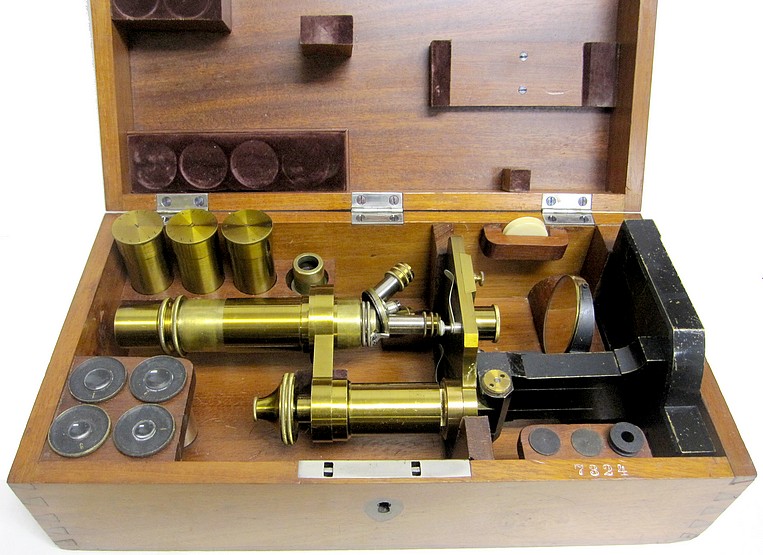
Among the accessories are three objectives with canisters marked A, D, and F, four eyepieces, an aperture stop holder with three stops, a sub-stage condenser to replace the stop holder for use with higher powers, an eyepiece micrometer, and an objective changer. The front lenses of the objectives are screwed off and then screwed onto the objective changer.
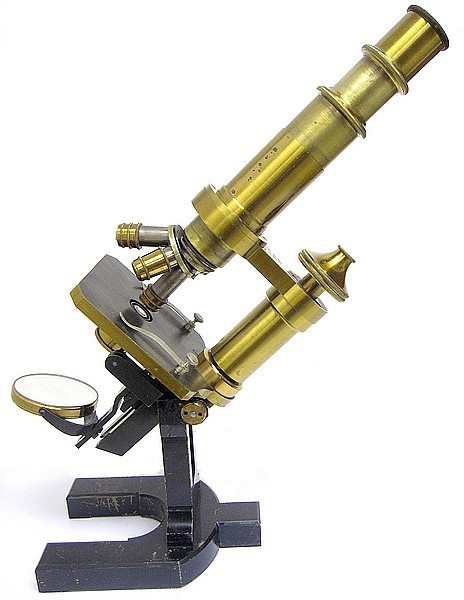
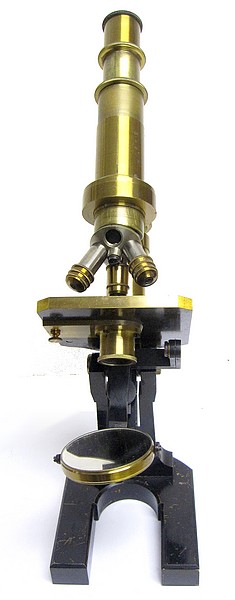
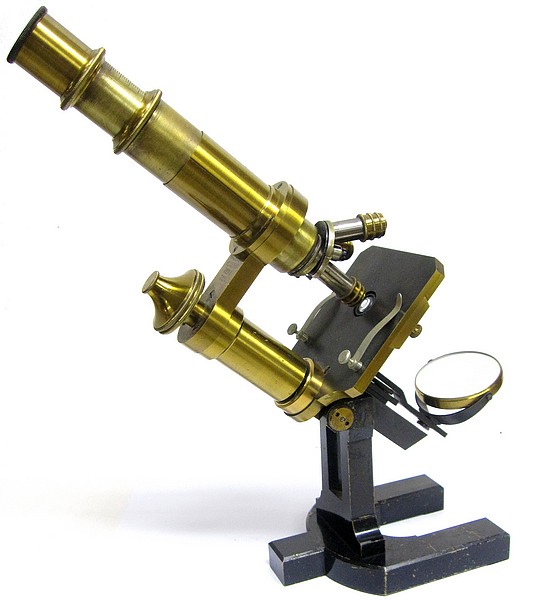
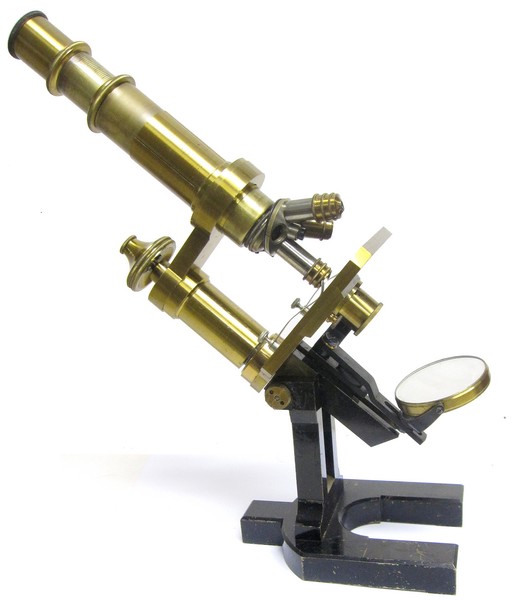
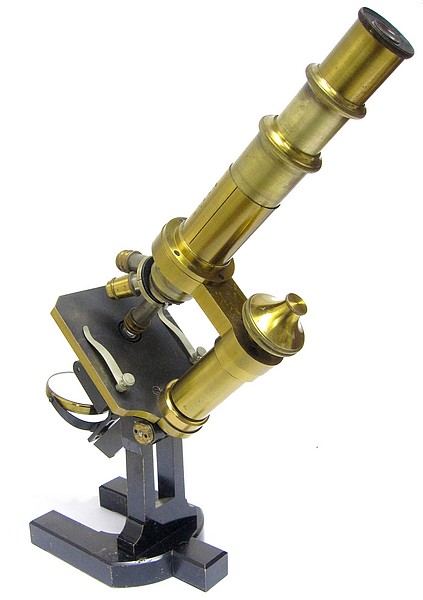
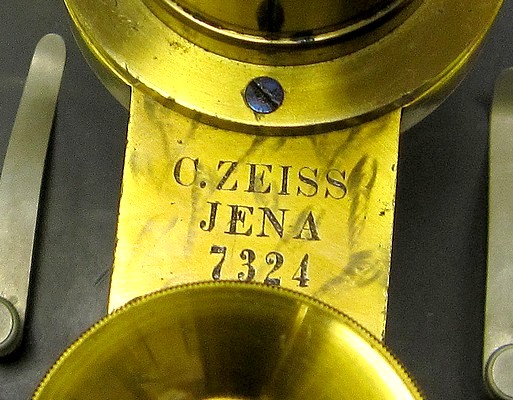
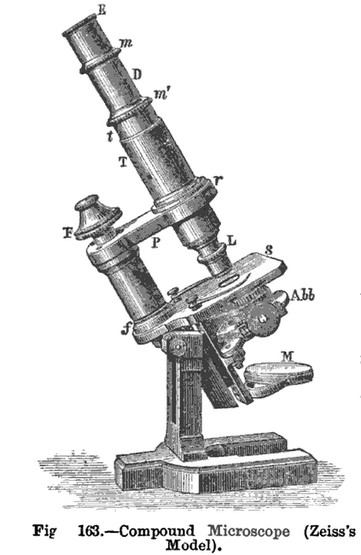
This model is illustrated and described in The Elements of Physiological Physics, 1884 as follows:
Fig. 163 represents a compound microscope of Zeiss's model. It consists of a firm foot which supports an upright stand. The stand is jointed so as to permit of the microscope being inclined or placed horizontally. From the stand projects a horizontal arm P, terminating in a ring r, in which is screwed a tube T. This tube is split so as to permit the lens tube to slide up and down easily. The lens tube consists of an outer tube t, movable up and down in the split tube t, by means of the milled edge m'. Fitting into the tube tL and also movable in it, is a second tube D, which is called the draw-tube, and is pushed home into t, or drawn out, by the milled edge w. E points to the outer end of the eye-piece which fits into D. At the other end L of the microscope tube is a screw adjustment which permits of the lenses being screwed on or off the tube, s is the stage on which the object to be examined is laid, and on it are two little spring slips for holding down the slide on which the object lies. In the centre of the stage is pierced an opening through which light can be directed by the mirror M, placed a little distance under the stage and movable in all directions. Under the stage is a disc pierced with openings of various sizes, the smallest no larger than a pin-head, any one of which can be brought under the opening in the stage. It thus acts as a stop, and regulates the quantity of light, aiding in definition with high powers by cutting off the outside rays. Under the stage is fitted Abb, a condenser, an arrangement of convex lenses for concentrating the light from the mirror on the object and so increasing the illumination. The form used in Zeiss's microscopes is Abbe's, and can be removed or replaced at pleasure. It is specially serviceable for high powers. There are two focussing arrangements in such an instrument. The coarse adjustment is made by grasping the milled edge m’ with finger and thumb of one hand, the other hand steadying the foot of the instrument, and, by means of a slightly turning movement, slowly moVang t down or up the split tube as may be desired, thus bringing the lenses nearer to or taking them farther away from the object. The object having been brought into view, accuracy of definition is obtained by a slight turning, in one direction or in another, of the fine screw f, the fine adjustment. By this screw the whole body of the instrument above is moved up or down on a pillar, and so focussing is effected.
The 1885 Zeiss catalog indicates that this model was sold with or without the full Abbe condenser. With this particular example, a more simple type of condenser was provided that occupies the same fitting that is used to hold the aperture stops. An earlier example of the Va model with serial number 4969 having the complete Abbe condenser is also in this collection.
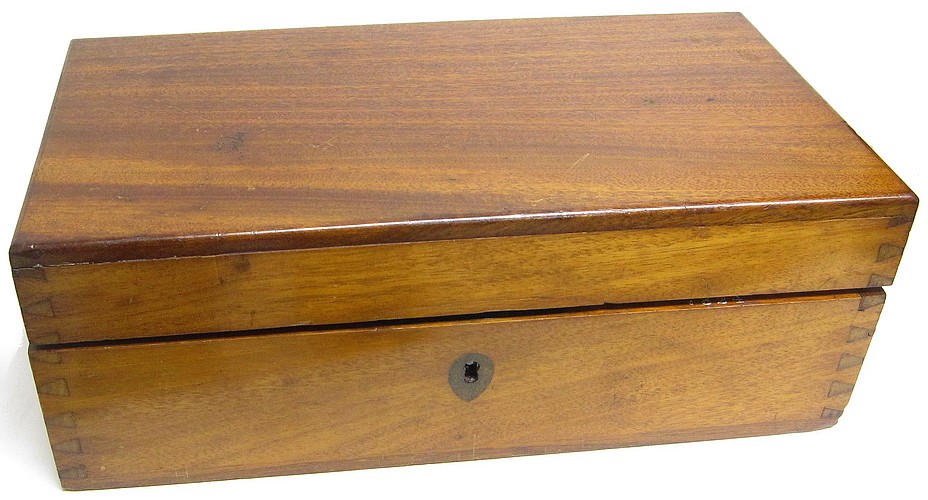

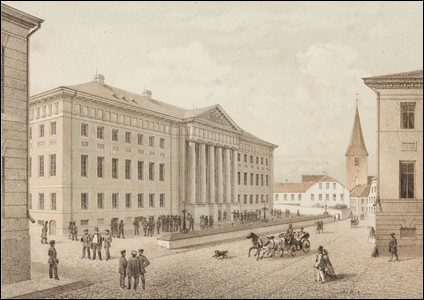
The University of Dorpat in 1860